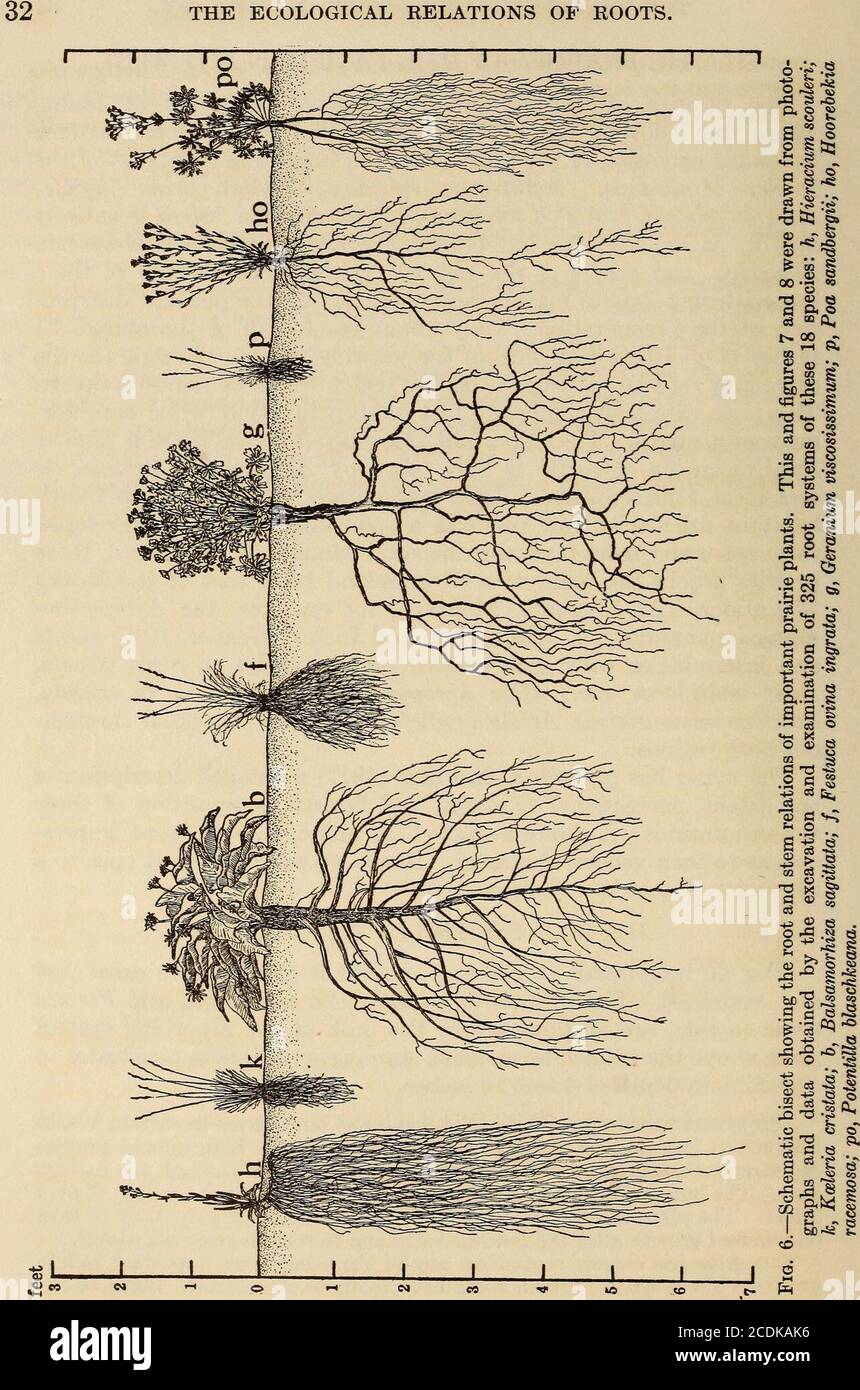. The ecological relations of roots . haracter. Hence we will proceed at once to adiscussion of root distribution. THE ROOT SYSTEMS OF THE GRASSES. Over 60 individuals of the four dominant grasses were excavatedand examined. Three, Koeleria cristata, Poa sandhergii, and Festucaovina ingrata, are shallow-rooted, the bulk of the absorbing systemlying above the 18-inch level, while Agropyrum spicatum penetrates toa maximum depth of 4 feet 10 inches. Agropyrum spicatum.—This is the dominant bunchgrass in eastern Wash-ington. It has its best development westward of the high upland prairiesof extrem

Image details
Contributor:
Reading Room 2020 / Alamy Stock PhotoImage ID:
2CDKAK6File size:
7.1 MB (540.8 KB Compressed download)Releases:
Model - no | Property - noDo I need a release?Dimensions:
1286 x 1943 px | 21.8 x 32.9 cm | 8.6 x 13 inches | 150dpiMore information:
This image is a public domain image, which means either that copyright has expired in the image or the copyright holder has waived their copyright. Alamy charges you a fee for access to the high resolution copy of the image.
This image could have imperfections as it’s either historical or reportage.
. The ecological relations of roots . haracter. Hence we will proceed at once to adiscussion of root distribution. THE ROOT SYSTEMS OF THE GRASSES. Over 60 individuals of the four dominant grasses were excavatedand examined. Three, Koeleria cristata, Poa sandhergii, and Festucaovina ingrata, are shallow-rooted, the bulk of the absorbing systemlying above the 18-inch level, while Agropyrum spicatum penetrates toa maximum depth of 4 feet 10 inches. Agropyrum spicatum.—This is the dominant bunchgrass in eastern Wash-ington. It has its best development westward of the high upland prairiesof extreme eastern Washington and along the rim-rock through the easternpart. The bunches are often 10 inches in diameter and reach a height of over3 feet. The plant blossoms in June and dries out in early July, only to takeon renewed growth after the autumn rains and to remain green all winter. This grass has coarser roots than any of the other three important nativegrasses. These coarse, fibrous roots have many short laterals. Some of the. THE PRAIRIES OF THE PACIFIC NORTHWEST. 33 roots reach a depth of 4 feet 10 inches, although on an average 4 feet 2 incheswas the greatest depth attained. Festuca ovina ingrata.—The blue bunchgrass ranks in importance withAgropyrum on the well-developed high prairies west of the foothills of theBitterroot Mountains between Spokane, Washington, and Lewiston, Idaho.Because of its abundance the very appropriate name Palouse (Fr. pelouse, aland clothed with a short, thick growth of herbage) was early applied to thisregion. The whole plant dries out considerably by the middle of July, but theautumn rains revive it and it is green throughout the rest of the year. Festuca ovina has a great mass of jet-black roots which occupy the soilthoroughly from the surface to a depth of about 18 inches, below which depthrelatively few roots extend. None of the roots are over 1 mm. in diameter.They branch profusely to the third order mostly, and the laterals are usu